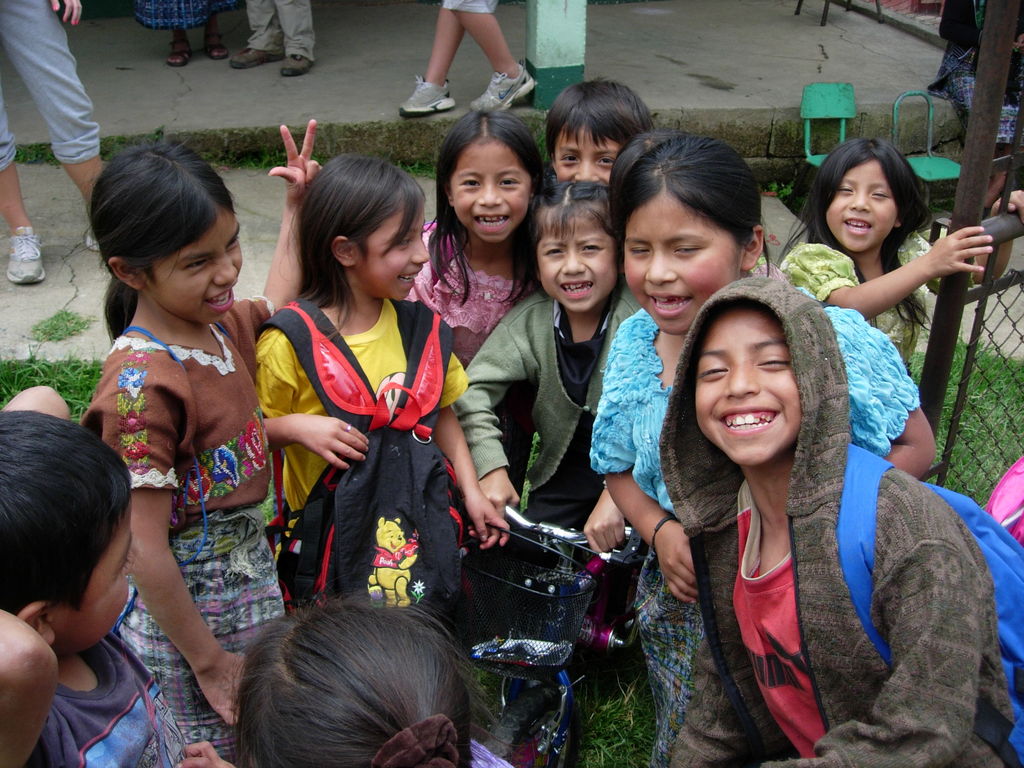By Mark Skeith | Visitor
Before heading to Long Way Home’s project in the Mayan highlands of Guatemala this summer, I decided get a feel for the organization by reading their website. I ran into this mission statement:
“Long Way Home’s mission is to break the cycle of poverty among youth in developing communities by creating educational opportunities, cultivating civic interaction, and encouraging healthy lifestyles.”
At first glance, their strategy seemed to be a straightforward and common way of reducing poverty in any developing country. After volunteering with them for a month, however, this pitch has gradually transformed into a very coherent and pointed approach to achieving sustainability in a community unlike any other in the world. Like nudging a line of dominoes waiting to fall, Long Way Home has introduced the idea of a better future into a community so that it can use preexisting relationships to do so when Long Way Home leaves.
A 45 minute drive up into the highlands from the economic vein of the Inter-American Highway, this community, San Juan Comalapa, has felt the winds of globalization but has not yet found the sails needed to enjoy it. Without business connections to foreign companies like Castrol, Fed Ex, or even Gold’s Gym, store owners have painted their logos on their storefront walls instead. The DVD stand in the central market is surrounded by people who would love to purchase movies but do not have the extra dollar to do so. Especially with people in their thirties or older, it was very easy to see an almost giddy excitement that their children and grandchildren will never have to see what they saw during the recent civil war.
That optimism is coupled though with another haunting idea that, although they are climbing out of their past, they could still slip back into it. There are Coca-Cola trucks servicing Comalapa now, but there are also guards carrying loaded shotguns. Villagers can now enjoy the crackling of fireworks at festivals without having to worry about government approval, but sometimes the bangs I heard were actually those of a gun.
Matt entered this community in 2002 as a PeaceCorp volunteer, building relationships with community members before returning home. But unlike many others in PeaceCorp, he realized an opportunity for sustainable development and returned with colleagues and funds in 2004 to see it through. With a network of community leaders that were determined to pull their village out of its past, Matt realized that he could do more than just teach a child, build a road, or save a tree here. By “creating educational opportunities”, he has been providing parents a lasting way to protect their children. By “cultivating civic interaction”, he can pass appropriate technologies along to people looking for just that. And by “encouraging healthy lifestyles”, he is providing a roadmap to a longer, brighter future in an environment that used to seem inevitably tarnished. In each of these 3 approaches offered in Long Way Home’s mission statement, the community is receiving the tools needed to help themselves when he leaves.
During my month volunteering there, I noticed so many little moments when this change of attitude would come out. One day, I was enjoying a snack with a married couple in the back of a pickup truck on the way to the school construction site, and when the husband tried to throw away the wrapper, his wife said to him, “You shouldn’t do that” (The concept of littering is definitely new there!). Another day, I followed a group of students up to the soccer field listening to them complain about their little soccer balls that pop far too easily, and then like receiving Willy Wonka’s golden ticket, I saw the excitement in their faces when Matt held up ten gold medals that ten lucky kids would receive if they hustled. Coming from the U.S. where the idea of working at a soup kitchen sounds absurd on a beautiful NFL Sunday, it was amazing to see entire communities banding together to build latrines and retaining walls for the local elementary school because no one else would.
When I look back on a month there, all the wonderful conversations I had with Guatemalans, Long Way Home staff, and other volunteers pointed to one clear message about sustainable development. Community members are not the targets of development; they are its force driving.
And, this is why I really think it’s their slogan, not their mission statement, that does them the more justice:
“From the ground up”
Project reports on GlobalGiving are posted directly to globalgiving.org by Project Leaders as they are completed, generally every 3-4 months. To protect the integrity of these documents, GlobalGiving does not alter them; therefore you may find some language or formatting issues.
If you donate to this project or have donated to this project, you can receive an email when this project posts a report. You can also subscribe for reports without donating.
Support this important cause by creating a personalized fundraising page.
Start a Fundraiser